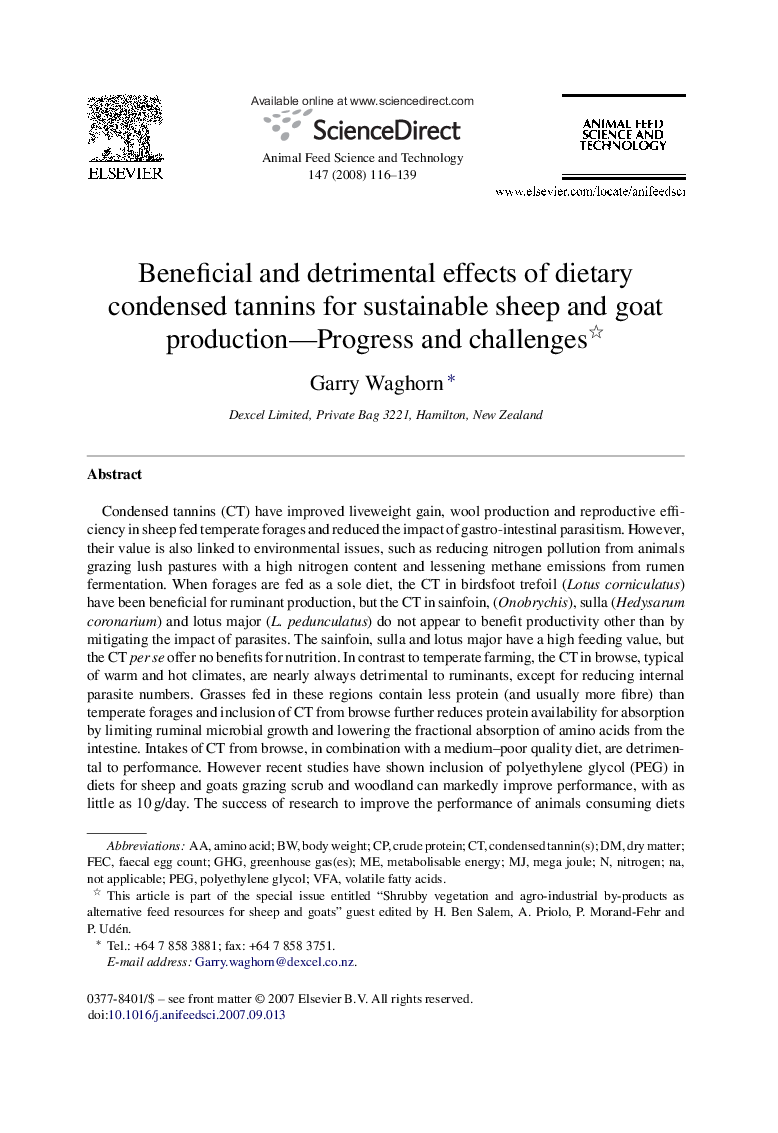| Article ID | Journal | Published Year | Pages | File Type |
|---|---|---|---|---|
| 2420722 | Animal Feed Science and Technology | 2008 | 24 Pages |
Condensed tannins (CT) have improved liveweight gain, wool production and reproductive efficiency in sheep fed temperate forages and reduced the impact of gastro-intestinal parasitism. However, their value is also linked to environmental issues, such as reducing nitrogen pollution from animals grazing lush pastures with a high nitrogen content and lessening methane emissions from rumen fermentation. When forages are fed as a sole diet, the CT in birdsfoot trefoil (Lotus corniculatus) have been beneficial for ruminant production, but the CT in sainfoin, (Onobrychis), sulla (Hedysarum coronarium) and lotus major (L. pedunculatus) do not appear to benefit productivity other than by mitigating the impact of parasites. The sainfoin, sulla and lotus major have a high feeding value, but the CT per se offer no benefits for nutrition. In contrast to temperate farming, the CT in browse, typical of warm and hot climates, are nearly always detrimental to ruminants, except for reducing internal parasite numbers. Grasses fed in these regions contain less protein (and usually more fibre) than temperate forages and inclusion of CT from browse further reduces protein availability for absorption by limiting ruminal microbial growth and lowering the fractional absorption of amino acids from the intestine. Intakes of CT from browse, in combination with a medium–poor quality diet, are detrimental to performance. However recent studies have shown inclusion of polyethylene glycol (PEG) in diets for sheep and goats grazing scrub and woodland can markedly improve performance, with as little as 10 g/day. The success of research to improve the performance of animals consuming diets containing CT in both temperate and hot climates will depend on communication between animal scientists and chemists. Researchers must measure the astringency and chemical characteristics of CT (and other secondary metabolites), to better understand the impact of tanniniferous feeds on nutritive value. These measurements will enable findings from unrelated trials to be evaluated and provide opportunities for optimising and mitigating the CT in contrasting ruminant production systems.
